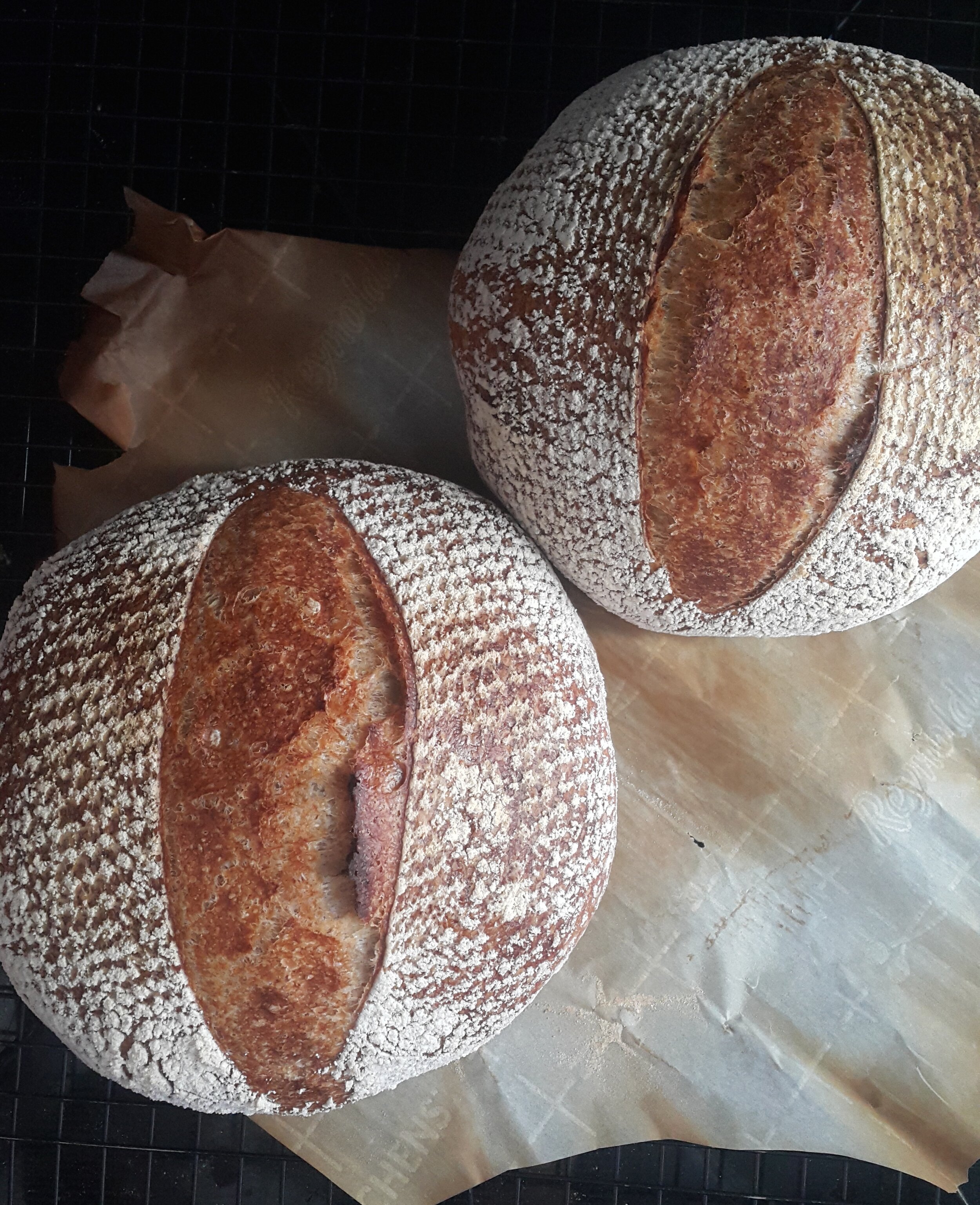Three Easy Recipes That Use Sourdough Starter Discard
I am a person who loves to make and create things and I have actually been baking and gardening long before I was sewing. I have a former colleague to thank for introducing me to the world of sourdough bread. In 2018, she gifted me my first starter and some helpful tips as I embarked on the multi-day journey that is sourdough bread. It wasn’t until this spring however, when it was practically impossible to find flour on the shelves, that I felt it necessary to use the discard that is created each time you nourish your starter with fresh water and flour. Thank goodness for the internet and the dedicated bakers who were experimenting with discard recipes long before home chefs popularized sourdough bread baking. After consulting many blog posts and Youtube videos, I have tried making both sweet and savoury treats using sourdough starter discard and have three go to dishes to make: crepes, rough puff pastry, and crackers.
Two sourdough loaves.
As far as sourdough bread baking goes, I have a lot to learn when it comes to understanding how to perfectly proof a loaf. I still maintain that imperfect bread is still delicious (a light toasting and some cheese can save just about any slice of bread), but I am truly in awe of those who understand how to manipulate temperature, time, and flour type to make delicious bread. Even if the learning curve for naturally leavened breads is a long one, maintaining a sourdough starer can still be a rewarding endeavor for bakers because baking with sourdough starter discard is much more forgiving than baking sourdough bread.
One thing that makes bread baking difficult, I think, is timing. You spend a lot of time attentively waiting while you make sourdough. There is an optimal moment to use your levain and to stop bulk fermenting your dough, and while recipes have time guidelines, the most skilled bread bakers look at the temperature and volume of the dough to determine when it’s ready to be shaped and baked. For recipes that use sourdough discard, time is on your side. These recipes call for discard that is past its peak activity. It is levain that has risen and fallen before you’ve had a chance to make bread or it’s the waste that remains from the starter’s weekly feeding. Sourdough discard may not be contributing the most active yeast but it offers other benefits to recipes.
And now, here are my three favourite ways to use sourdough starter discard. Each of the recipes below can be altered to have both a savoury and sweet application and we love an adaptable recipe!
Crepes. I like this recipe for a lot of reasons but the main reason is that if you don’t want to, you don’t need to add any extra flour. There is already a good amount of flour in the discard and since crepe batter is quite thin, all you need to do is add egg, milk, and butter to your discard and mix until you get the right consistency. This recipe is also easy to make ahead and keep in the fridge. It takes just minutes to cook crepes, so you can make them in no time. I’ve filled these crepes with both savoury insides (as in the video below) but also love them with fruit, chocolate, and maple syrup. I don’t follow a recipe when I make crepes but was inspired to do so after watching Claire’s It’s Alive episode on Bon Appetit (a channel I no longer subscribe to or watch).
Rough puff pastry. You may have seen some rough puff pastries call for apple juice or alcohol. The idea is that the slight acidity in these liquids (compared to water) prevents gluten formation and results in a more tender crust. Sourdough bread and the levain that produces its characteristic sour flavour is the result of the yeast metabolizing the flour and creating lactic acid and acetic acid as a byproduct. Using sourdough discard as the liquid in a rough puff pastry dough will introduce the moisture and acid needed to bring the dough together and help produce a tender crust. I start with 1 cup of flour and 1/3 cup of butter (this is my preferred ratio). I add a big pinch of salt and use my fingers to crumble the butter into the flour. Once the butter and flour has a coarse and crumbly texture, I add the starter in small amounts, maybe 1-2 tablespoons at a time until the dough comes together and I’m able to knead it into one ball without it being sticky.
Crackers. I found two recipes for sourdough discard crackers and both are equally delicious. Stand-over-the-pan-no-storage-container-necessary delicious. The recipe from King Arthur Flour uses butter and The Flourist (a bakery in Vancouver) uses olive oil. What I like most about the recipe from The Flourist is that it requires you to use your instincts, understanding that the consistency of the starter a person uses can vary. I’ve also used a combination of oil and butter in the dough. I’ve also made a dough with just bacon fat. I’ve added parmesan cheese and roasted garlic to the dough.
What I like most about the three dishes above is that each of them is a reminder that not all baking requires exact measures. In the end, you’re striving for a particular consistency or texture, and this type of instinctual baking is my favourite kind of baking.



